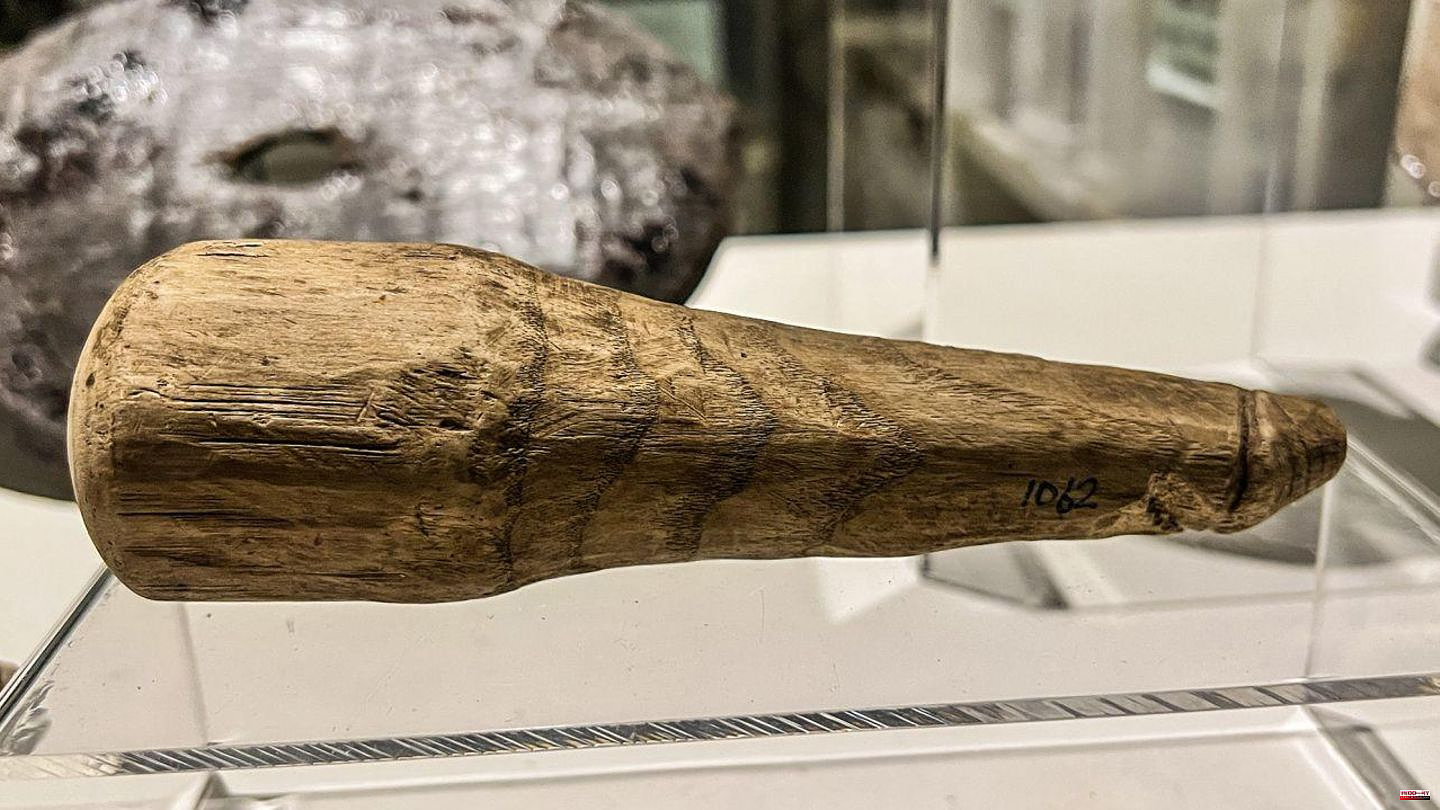For 2000 years, a sex toy lay dormant near Hadrian's Wall in what is now England. At that time the wooden penis was buried, now it was examined for the first time. The 15.7 centimeter long dildo was dug up in 1992, but its importance was not recognized. It was mistaken for a sewing utensil, a pad for darning, and not further examined.
"I have to admit," said Rob Collins, Lecturer in Archeology at Newcastle University, "part of me takes for granted that it's a penis. I don't know who put it in the catalogue. Maybe it was makes someone uncomfortable or didn't think the Romans would do such stupid things."
"This is the first known carved wooden phallus of this size, not just from Roman Britain but from anywhere in the Roman world, as far as we know," continued Collins. It was found near Vindolanda Castle, one of the fortifications near Hadrian's Wall. This wall separated the world of Roman Britain from that of the "uncivilized" North.
The attribution is not yet entirely certain. It is conceivable that the object was not used for sex games, but as a talisman, lucky charm or simply as a pestle. But if it were, it would be the first known sexual object from the Roman Empire. In the literature and in the pictorial representation, such dildos have been handed down many times, but no object has survived the times.
Barbara Birley, curator of the Vindolanda Trust, also assumes that it was an everyday object. "The wooden phallus may be unique to us in having survived from that period, but it is unlikely that it was the only one of its kind used at the site, along the frontier, or even in Roman Britain."
The phallus is made of ash wood, the glans is set off by the characteristic penis line. In their article in the journal "Antiquity", the researchers write that the object was probably noticeably larger at the time. It was cut from young wood and has since dried out and shriveled. Both ends of the item are smoother than the middle, indicating the type of usage. If the item was actually used as a sex toy, traces of biological material could be found. "If we wanted to scientifically prove that the item was used for sexual activity, a lot of new research would be required," said Dr. Collins.
The find of the dildo is an archaeological curiosity, because wooden objects mostly disintegrate in the ground. The situation is different in the vicinity of Fort Vindolanda, where the subsoil contains hardly any oxygen and has therefore preserved numerous objects made of wood and leather. These materials were used throughout the Empire. In northern Europe, however, they can only survive in moist, dark and oxygen-poor soils - such as in bogs. But their time is running out. Since the beginning of the 19th century, these zones have been drained in order to make the land arable, with the result that the biological substances lost their protective layer. The moors that survived this phase as a nature reserve are now at risk of falling victim to climate change, which is causing the water table to drop.
Fort Vindolanda is a few kilometers south of Hadrian's Wall proper. It separates the British Isles in the north at a narrow point and is the model for "The Wall" in "Game of Thrones". Except that the real wall didn't have the colossal proportions of the fantasy ice wall. The real wall was built in the years after AD 122 by order of the Roman Emperor Hadrian. It was intended to prevent raids into Roman-controlled territory, but also to make it impossible to evade customs controls. At the same time it marked the limit of Roman expansion. Its construction was a signal that further conquests in the north were not sought. The border was never really pacified. There was fighting under the emperors Marc Aurel, Commodus and Septimius Severus. This continued until the Romans gave up the British Isles. The rampart was still occupied after the Roman legions left in 410 AD.
Quelle: Antiquity, Guardian, Telegraph












